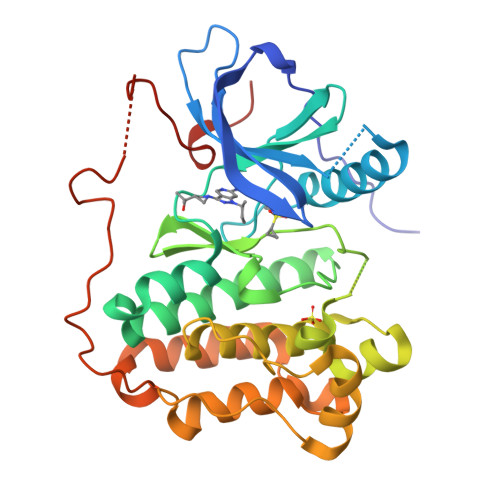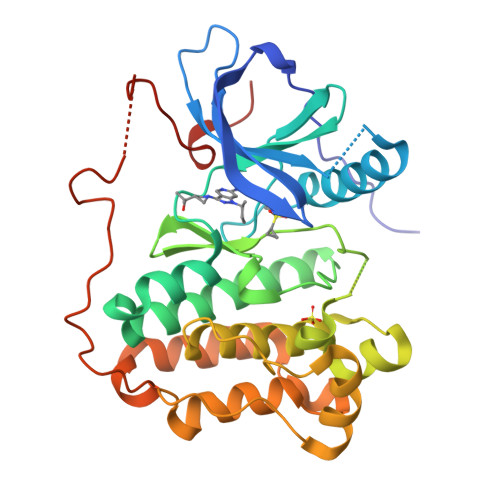Discovery of a Noncovalent, Mutant-Selective Epidermal Growth Factor Receptor Inhibitor.
Chan, B.K., Hanan, E.J., Bowman, K.K., Bryan, M.C., Burdick, D., Chan, E., Chen, Y., Clausen, S., Dela Vega, T., Dotson, J., Eigenbrot, C., Elliott, R.L., Heald, R.A., Jackson, P.S., Knight, J.D., La, H., Lainchbury, M.D., Malek, S., Purkey, H.E., Schaefer, G., Schmidt, S., Seward, E.M., Sideris, S., Shao, L., Wang, S., Yeap, S.K., Yen, I., Yu, C., Heffron, T.P.(2016) J Med Chem 59: 9080-9093
- PubMed: 27564586
- DOI: https://doi.org/10.1021/acs.jmedchem.6b00995
- Primary Citation of Related Structures:
5HCX, 5HCY, 5HCZ - PubMed Abstract:
Inhibitors targeting the activating mutants of the epidermal growth factor receptor (EGFR) have found success in the treatment of EGFR mutant positive non-small-cell lung cancer. A secondary point mutation (T790M) in the inhibitor binding site has been linked to the acquired resistance against those first generation therapeutics. Herein, we describe the lead optimization of a series of reversible, pan-mutant (L858R, del 746-750, T790M/L858R, and T790M/del 746-750 ) EGFR inhibitors. By use of a noncovalent double mutant (T790M/L858R and T790M/del 746-750 ) selective EGFR inhibitor (2) as a starting point, activities against the single mutants (L858R and del 746-750 ) were introduced through a series of structure-guided modifications. The in vitro ADME-PK properties of the lead molecules were further optimized through a number of rational structural changes. The resulting inhibitor (21) exhibited excellent cellular activity against both the single and double mutants of EGFR, demonstrating target engagement in vivo and ADME-PK properties that are suitable for further evaluation. The reversible, noncovalent inhibitors described complement the covalent pan-mutant EGFR inhibitors that have shown encouraging results in recent clinical trials.
Organizational Affiliation:
Charles River Laboratories, 7/9 Spire Green Centre, Flex Meadow, Harlow, Essex CM19 5TR, United Kingdom.


















